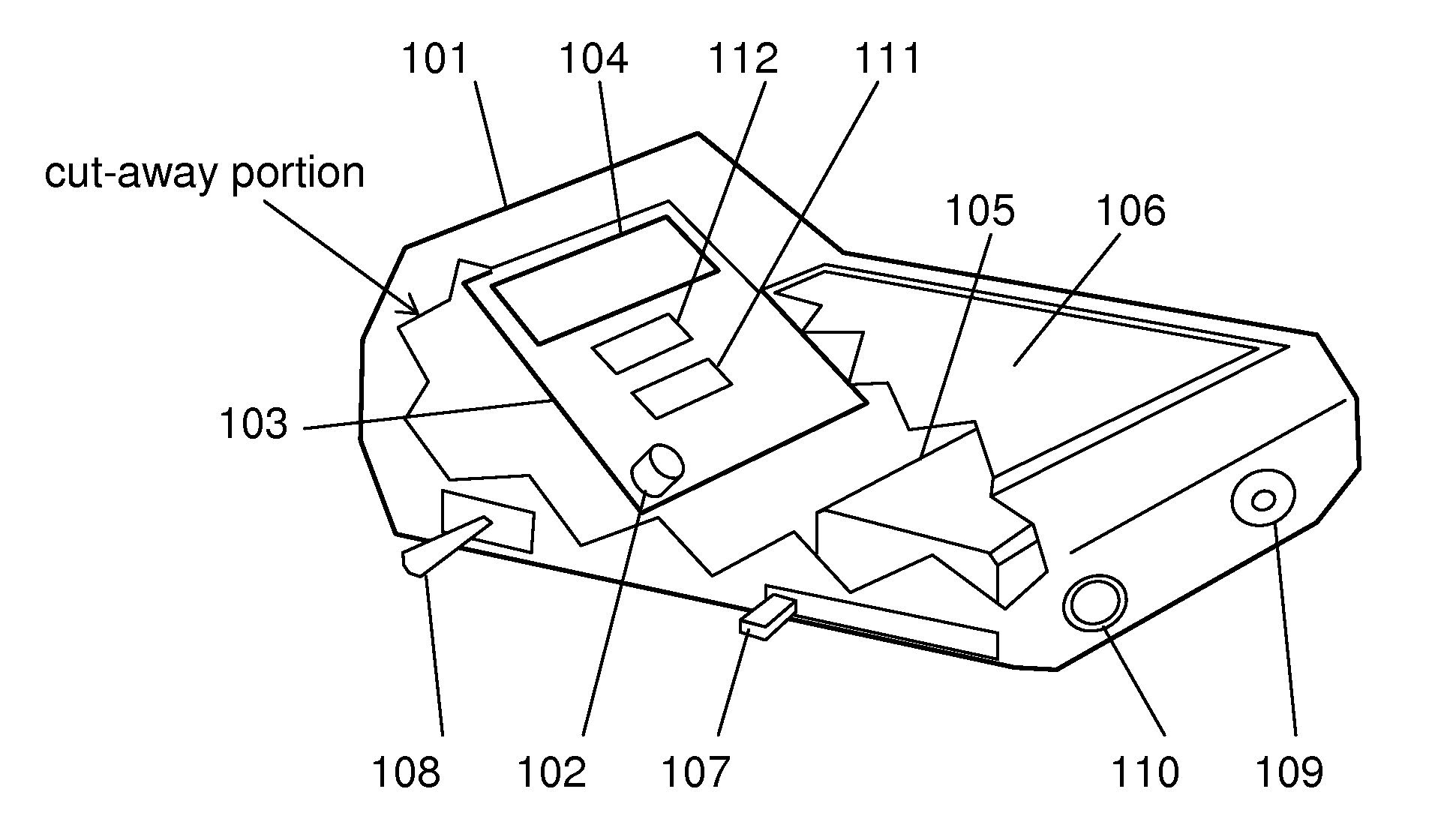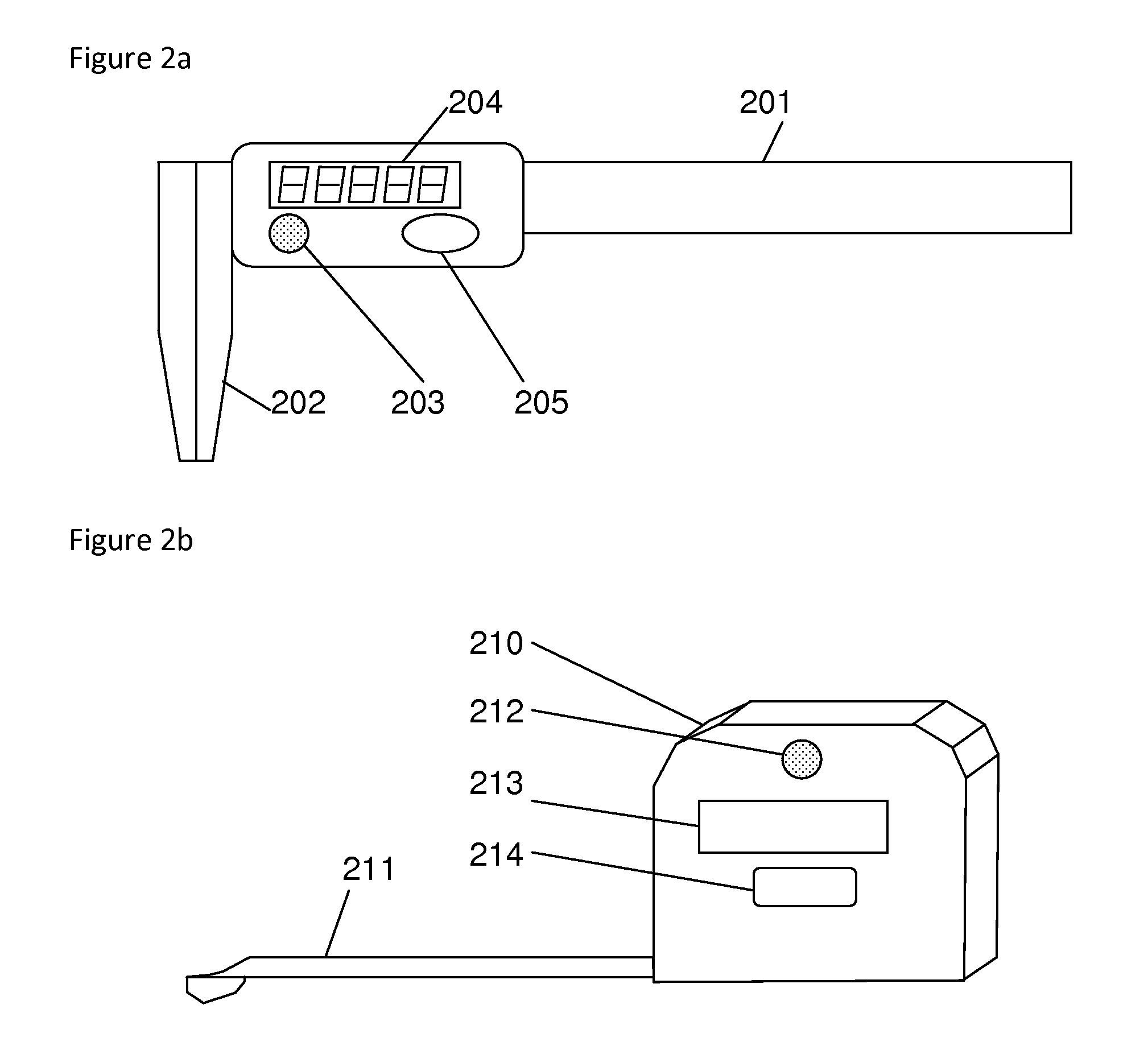Voice-Activated Measurement System
a technology of voice activation and measurement system, which is applied in the field of voice activation system, can solve the problems of not keeping pace with voice activation technology, no such device exists, and no stopwatch capability with voice-controlled start and stop function, etc., and achieves the effect of convenient and hands-free operation, fast time interval measurement, and greater precision
- Summary
- Abstract
- Description
- Claims
- Application Information
AI Technical Summary
Benefits of technology
Problems solved by technology
Method used
Image
Examples
Embodiment Construction
[0055]Referring to FIG. 1, an embodiment according to the invention is an instrument comprising a case 101 (shown partly cut away), a microphone 102, a circuit board 103, and a display 104. The case 101 is a plastic enclosure with an aperture for the display 104, plus a battery 105, a multifunction switch 106, a gain switch 107, a mode switch 108, a communications connector 109 for a detachable microphone (not shown), and a power connector 110 for a detachable power supply (not shown).
[0056]The microphone 102 is a small electret transducer such as the CMC-5044PF-A, with sufficient sensitivity (preferably at least −30 dB) in the vocal frequency range to detect spoken commands, and is wired to generate electrical signals related to the command sounds.
[0057]The circuit board 103 includes an amplifier 111 which is configured to amplify the signals from the microphone 102, preferably excluding signals having frequencies outside the voiced frequency range. The amplifier 111 may be an LM35...
PUM
 Login to View More
Login to View More Abstract
Description
Claims
Application Information
 Login to View More
Login to View More - R&D
- Intellectual Property
- Life Sciences
- Materials
- Tech Scout
- Unparalleled Data Quality
- Higher Quality Content
- 60% Fewer Hallucinations
Browse by: Latest US Patents, China's latest patents, Technical Efficacy Thesaurus, Application Domain, Technology Topic, Popular Technical Reports.
© 2025 PatSnap. All rights reserved.Legal|Privacy policy|Modern Slavery Act Transparency Statement|Sitemap|About US| Contact US: help@patsnap.com



